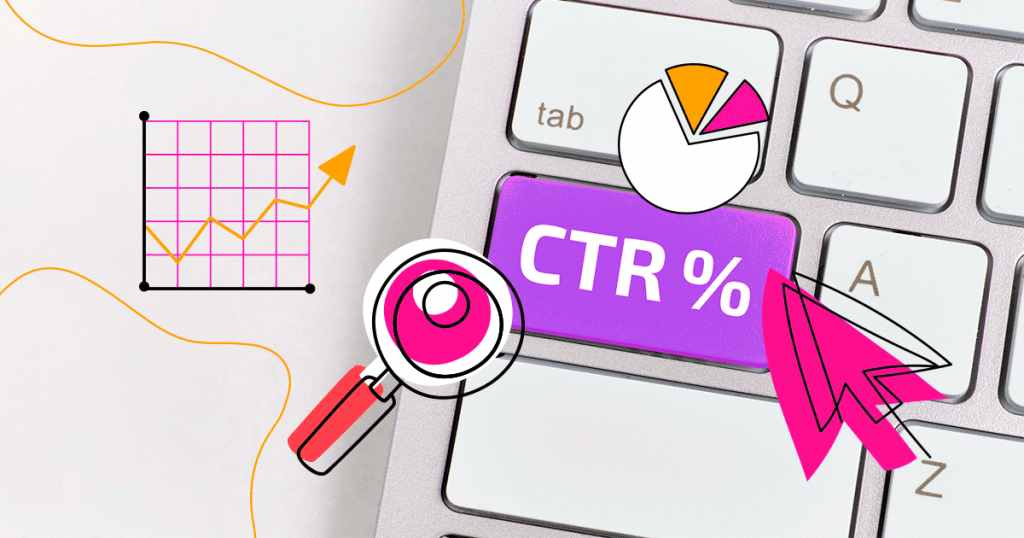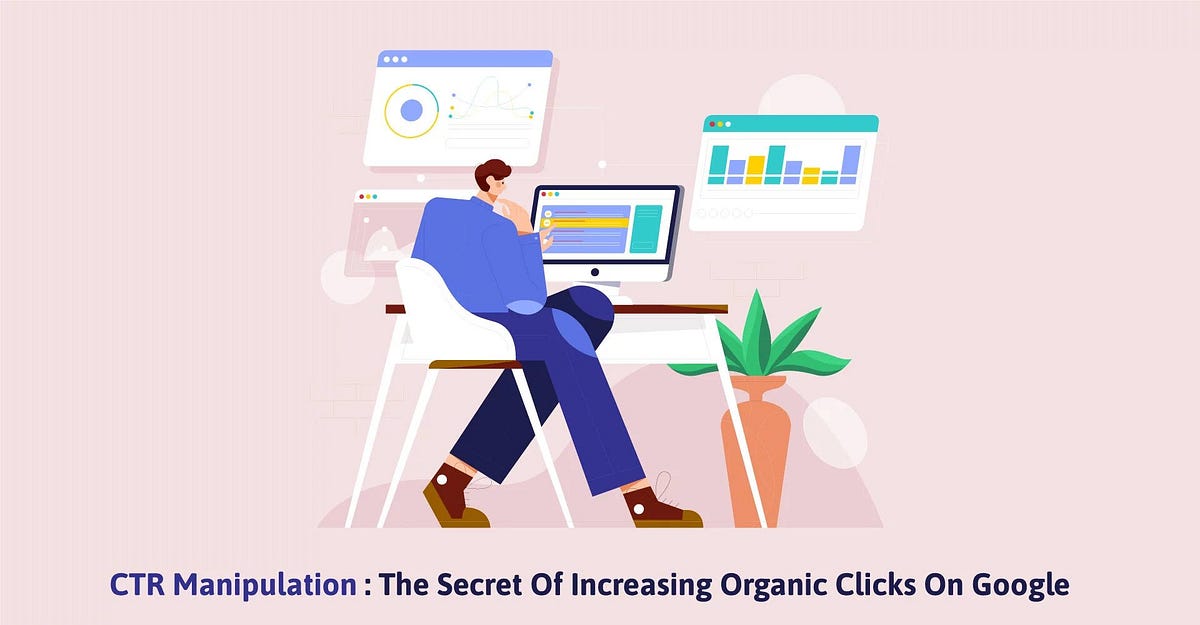Enhancing Organic Click-Through Fees With CTR Manipulation
The optimization of natural click-through rates (CTR) is a nuanced venture that pivots on recognizing both user psychology and efficient web content presentation. By leveraging tactical adjustment strategies, such as powerfully crafted headlines and aesthetically interesting elements, marketing professionals can dramatically enhance individual interaction. Nonetheless, the landscape is rife with misunderstandings and oversimplifications regarding what absolutely drives CTR. As we discover the details of these approaches, it becomes important to determine the underlying principles that can cause continual success in catching target market interest. What genuinely distinguishes the reliable from the inadequate in this essential facet of electronic advertising and marketing?
Recognizing Click-Through Fees
Comprehending click-through rates (CTR) is essential for evaluating the performance of internet marketing methods. CTR measures the percentage of customers that click on a specific web link or ad compared to the complete variety of users that watch it. A higher CTR indicates that the web content is engaging and relevant to the target market, while a reduced CTR might signal a demand for optimization.
To determine CTR, divide the variety of clicks by the number of impressions and increase by 100. If an ad obtains 300 clicks out of 10,000 perceptions, the CTR would be 3%. This statistics is essential for analyzing different elements of electronic marketing, consisting of search engine optimization (SEARCH ENGINE OPTIMIZATION), email campaigns, and social networks advertising and marketing.
Moreover, analyzing CTR helps online marketers determine which strategies yield the finest results and which need refinement. By concentrating on boosting CTR, organizations can enhance their web content's presence and efficacy, resulting in raised web traffic and possible conversions. Understanding the nuances of CTR is fundamental for any marketing expert aiming to enhance their on-line presence and take full advantage of return on financial investment (ROI)

The Psychology of Customer Actions
Individual habits is substantially influenced by psychological factors that determine just how individuals communicate with online web content. Recognizing these aspects is necessary for enhancing click-through rates (CTR) in natural search outcomes. Cognitive predispositions, such as the anchoring impact, play an essential role fit individuals' perceptions. When customers come across info, their initial impacts can heavily influence their succeeding judgments about importance and reputation.
Psychological reactions additionally significantly effect user habits. Web content that resonates mentally can cause a sense of seriousness or inquisitiveness, prompting individuals to click. In addition, social proof-- such as individual testimonials or ratings-- can improve depend on and urge engagement, as individuals typically aim to the behaviors of others to notify their very own choices.
Moreover, the principle of shortage can drive clicks - CTR Manipulation. Limited-time offers or special material develop a fear of losing out (FOMO), compelling individuals to act swiftly. Recognizing these emotional drivers makes it possible for online marketers to produce more compelling material that reverberates with their target market
Efficient CTR Control Methods
Leveraging mental understandings can substantially boost click-through prices (CTR) with targeted control methods. One of the most efficient i loved this methods is using compelling headlines that stimulate inquisitiveness or necessity. Wording titles as concerns or integrating numbers can draw in more attention, motivating customers to click.
An additional method includes enhancing meta descriptions to develop a feeling of significance and immediacy. By clearly describing the options or advantages offered in the content, you can involve prospective visitors and persuade them to click. In addition, using power words-- such as "special," "proven," or "cost-free"-- can boost the charm of your content.
Aesthetic aspects also play a crucial duty. Integrating attractive photos or thumbnails can draw users in and enhance CTR. A/B testing various visuals can assist recognize which pictures resonate finest with your audience.
Last but not least, guaranteeing that your content guarantees deliverable value causes higher CTR. They are much more most likely to engage when individuals regard that clicking will give them with meaningful understandings or solutions. By using these techniques thoughtfully, marketers can successfully adjust CTR to their advantage while preserving moral standards.
Typical Misconceptions About CTR
A number of mistaken beliefs border click-through prices (CTR) that can lead marketers to make misguided decisions. While a high CTR suggests that more individuals are clicking, it does not ensure sales or conversions.
An additional usual idea is LinkDaddy CTR Manipulation that CTR is a separated metric. In truth, CTR ought to be assessed together with other efficiency indications, such as bounce rate and conversion rate, to gain an all natural sight of campaign success.
Additionally, some marketers think that maximizing for CTR alone look at this web-site suffices. Nevertheless, focusing specifically on CTR can cause clickbait techniques that may bring in clicks however fail to involve customers meaningfully. This method can harm brand name credibility and outcome in lower retention prices
Finally, there is a notion that CTR approaches are widely reliable. The reality is that optimal CTR techniques can vary substantially across markets and target audiences, requiring customized techniques for various market sections. Recognizing these myths is critical for establishing reliable CTR techniques that straighten with overarching marketing objectives.
Measuring CTR Success
Although high click-through rates (CTR) can show successful interaction with web content, measuring their true success calls for a comprehensive evaluation of numerous factors. First, it is necessary to understand the context in which the CTR is attained. For example, a high CTR on a deceptive title may not translate to significant involvement or conversions, ultimately reflecting improperly on the brand name's credibility.
2nd, reviewing the resource of traffic is essential. Organic web traffic from online search engine can symbolize a durable web content method, while clicks from irrelevant sources might indicate an absence of targeting. In addition, gauging the succeeding customer habits is crucial; examining metrics such as bounce price, time invested in page, and conversion rates can provide deeper understandings right into the top quality of the involvement started by the CTR.

Conclusion

The optimization of natural click-through rates (CTR) is a nuanced undertaking that hinges on recognizing both individual psychology and reliable material discussion. CTR determines the percent of individuals that click on a certain web link or ad contrasted to the total number of users who watch it. A higher CTR shows that the content is involving and pertinent to the target audience, while a lower CTR might signal a requirement for optimization.
Concentrating solely on CTR can lead to clickbait methods that may draw in clicks yet fail to involve customers meaningfully. Additionally, determining the succeeding user habits is essential; evaluating metrics such as bounce price, time invested on page, and conversion rates can supply much deeper insights into the high quality of the involvement initiated by the CTR.